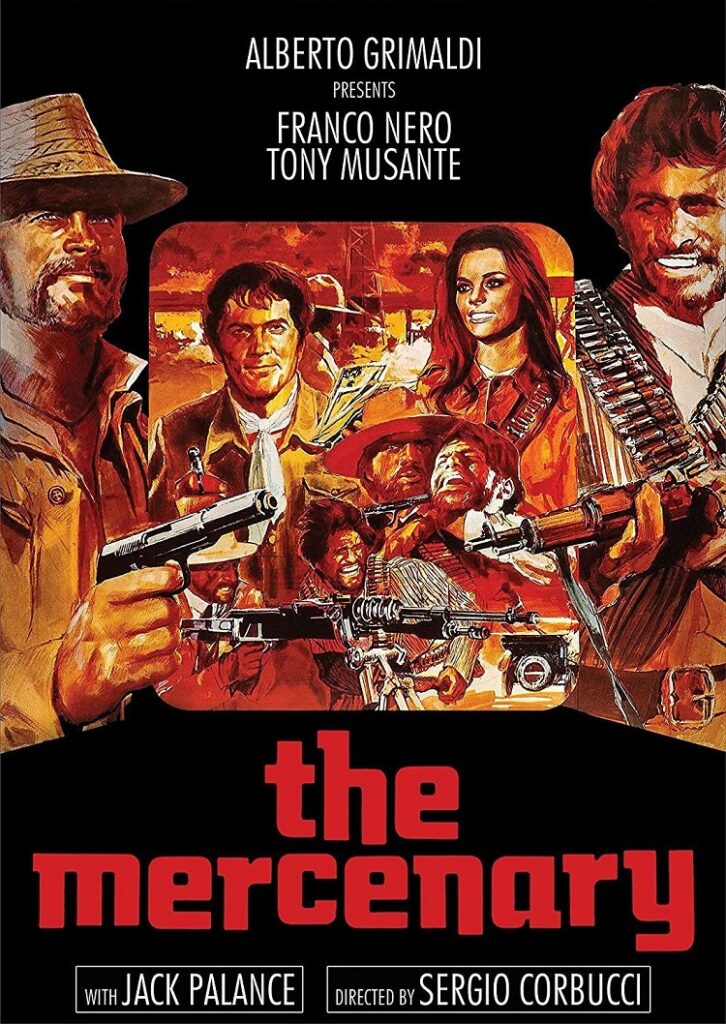
Amongst the many subgenres of the European western ‒ the tombstones of which typically bear the headings of “Revenge” and “Betrayal” ‒ is another category, informally referred to by devout aficionados as the “Zapata Western.” Set during the Mexican Revolution (see: History), these plates of Spaghetti usually feature a pair of protagonists, neither of whom truly adore one another or ever see eye-to-eye, but who form an alliance nevertheless in their individual, alternating quests for glory, money, and/or freedom. Naturally, the American(ized) lead is always the one in pursuit of a fistful of dollars within the confines of these fairly politically-charged films.
Up until now, one of my favorite films hailing from this particular category has always been Sergio (Django) Corbucci’s Compañeros (1970), which featured the only on-screen pairing of Italian cinema titans Franco Nero and Tomas Milian. It also sported an amazing Ennio Morricone score and featured a sleazy, stoned, one-handed, greasy-haired Jack Palance as the film’s villain, which helped escalate the cult classic up the ranks in my book. Alas, I have yet to see the entire great world of European westerns, so you can imagine my utter surprise and delight when I discovered Corbucci had previously helmed an earlier entry to the Zapata field in 1968, with several key cast and crew.
The Mercenary (Il mercenario) finds Franco Nero taking on a role very similar to the one he would so (understandably) comfortably inhabit in Compañeros, wherein he played a Swedish arms dealer for hire with a few tricks up his sleeve. Here, he’s a Polish mercenary (der) for hire. With tricks up his sleeve, as well as a peculiar method of lighting his matches. Like the later film, the main story is told in flashback, with Tony Musante playing a Mexican (!) nobody who overcomes his tyrannical overlords, only to become a wanted fugitive who roams the countryside “liberating” his countrymen of such troublesome worries as money.
Meanwhile, Jack Palance ‒ who completely steals the show as Nero’s rival as a character named Curly (see: City Slickers), complete with a curly-haired wig ‒ inches the Mexican Army towards his nemeses at every turn, eventually leading to a dynamic The Good, the Bad and the Ugly-esque highlight in a bullfighting arena, where Musante is dressed up as a rodeo clown! (Quentin Tarantino fans may recognize the strains of Ennio Morricone’s score during this awesome moment, as he would “recycle” the music in Kill Bill: Volume 2 decades later.) Of course, nothing beats that jaw-dropping moment in The Mercenary where Nero and Musante’s gang strip Palance down to nothing.
Talk about The Legend of Curly’s Gold!
Also starring in this (equally exciting) precursor to Compañeros are Giovanni Ralli as Musante’s love interest, Eduardo Fajardo (as one of the many corrupt bad guys), Franco Giacobini, Lorenzo Robledo, and the great Raf Baldassarre. Bruno Nicolai, who conducted Morricone’s Compañeros score, shares composition credit with his frequent musical collaborator here. Death Rides a Horse screenwriter Luciano Vincenzoni once again pens the script (with the collaboration of Corbucci, Sergio Spina, and Adriano Bolzoni). Alberto Grimaldi produces.
Released in several English-speaking markets as A Professional Gun, The Mercenary finally arrives in America with a transfer worthy of your attention. Presented as part of Kino Lorber’s Studio Classics line, this nifty Zapata Western looks positively beautiful in its 1080p MPEG-4 AVC transfer. With no noticeable defects to distract from the dusty exteriors or the deep dreamy pools of Nero’s trademark eyes, the image here is nothing short of top-notch. Likewise, the DTS-HD MA 2.0 soundtrack ‒ which offers us the English-dubbed soundtrack (fear not, most of the leads looped their own dialogue) ‒ is perfect. No subtitles are included for this release.
Special features for Kino Lorber’s BD50 release are fairly limited, but worth a look at (or listen to) nevertheless. First off is an audio commentary from Repo Man auteur Alex Cox, who proves to be quite the unsung authority (and fan) on the European western genre. Two image galleries are included, which depict a good number of stills and artwork. Lastly, there are five trailers to revel in here: The Mercenary, Navajo Joe, A Fistful of Dollars, Death Rides a Horse, and Valdez is Coming. All in all, it’s a fine assembling of goodies for a Spaghetti western I couldn’t be any happier to have finally “discovered.”
Highly Recommended.